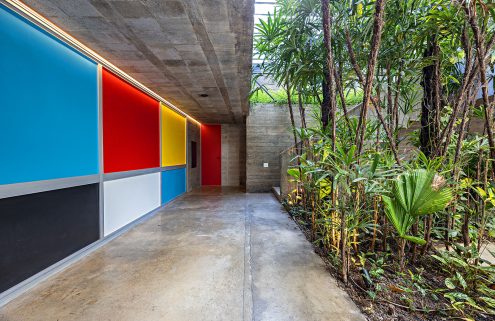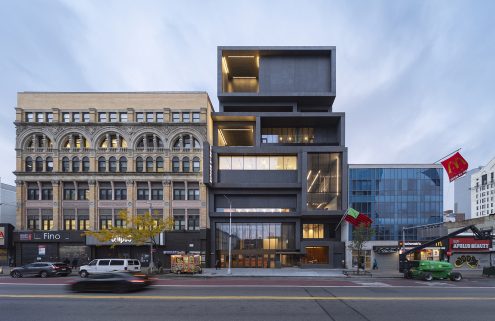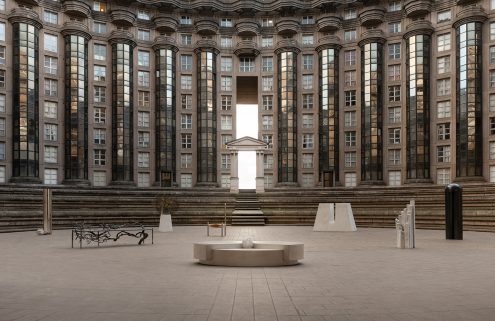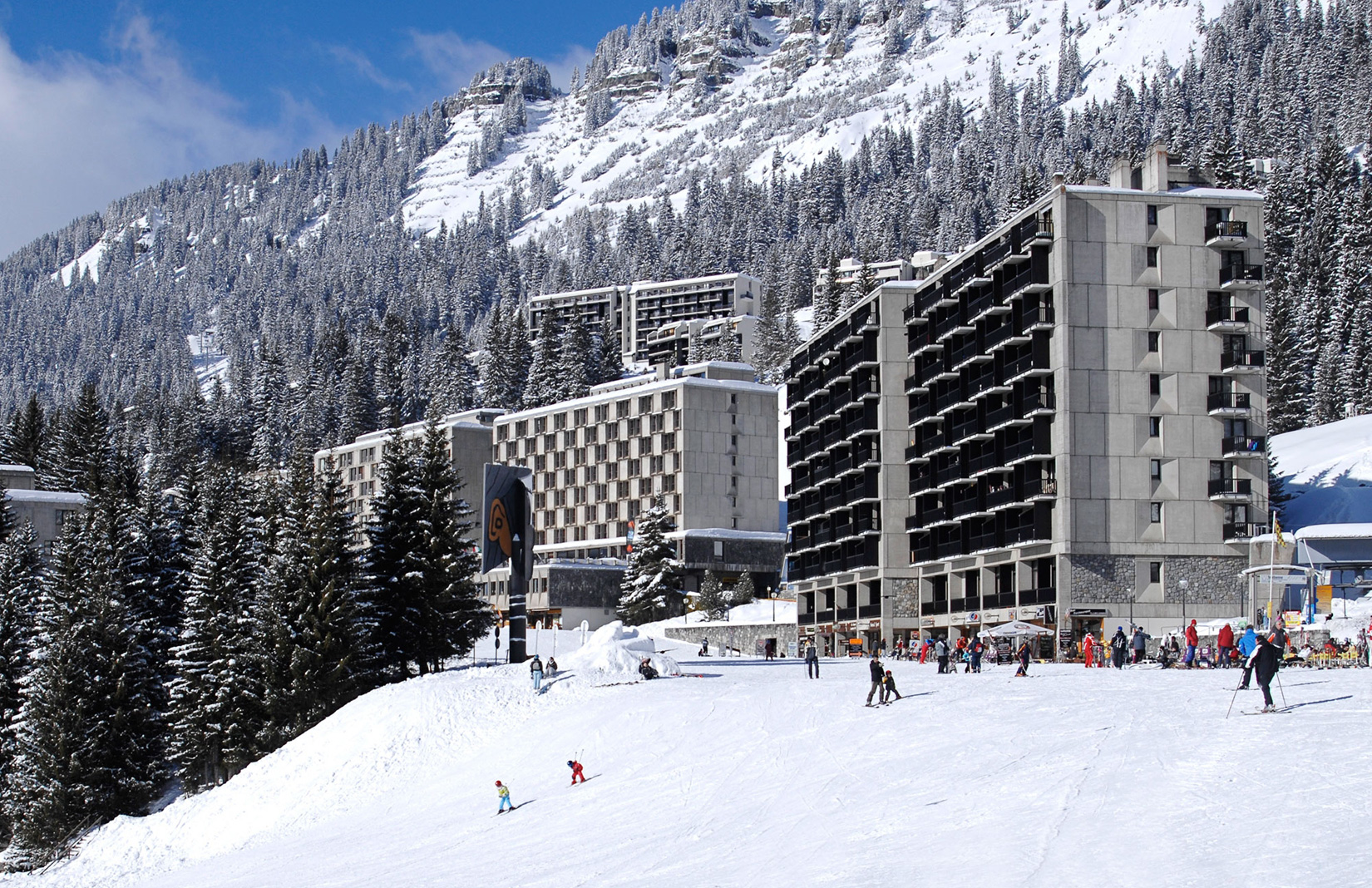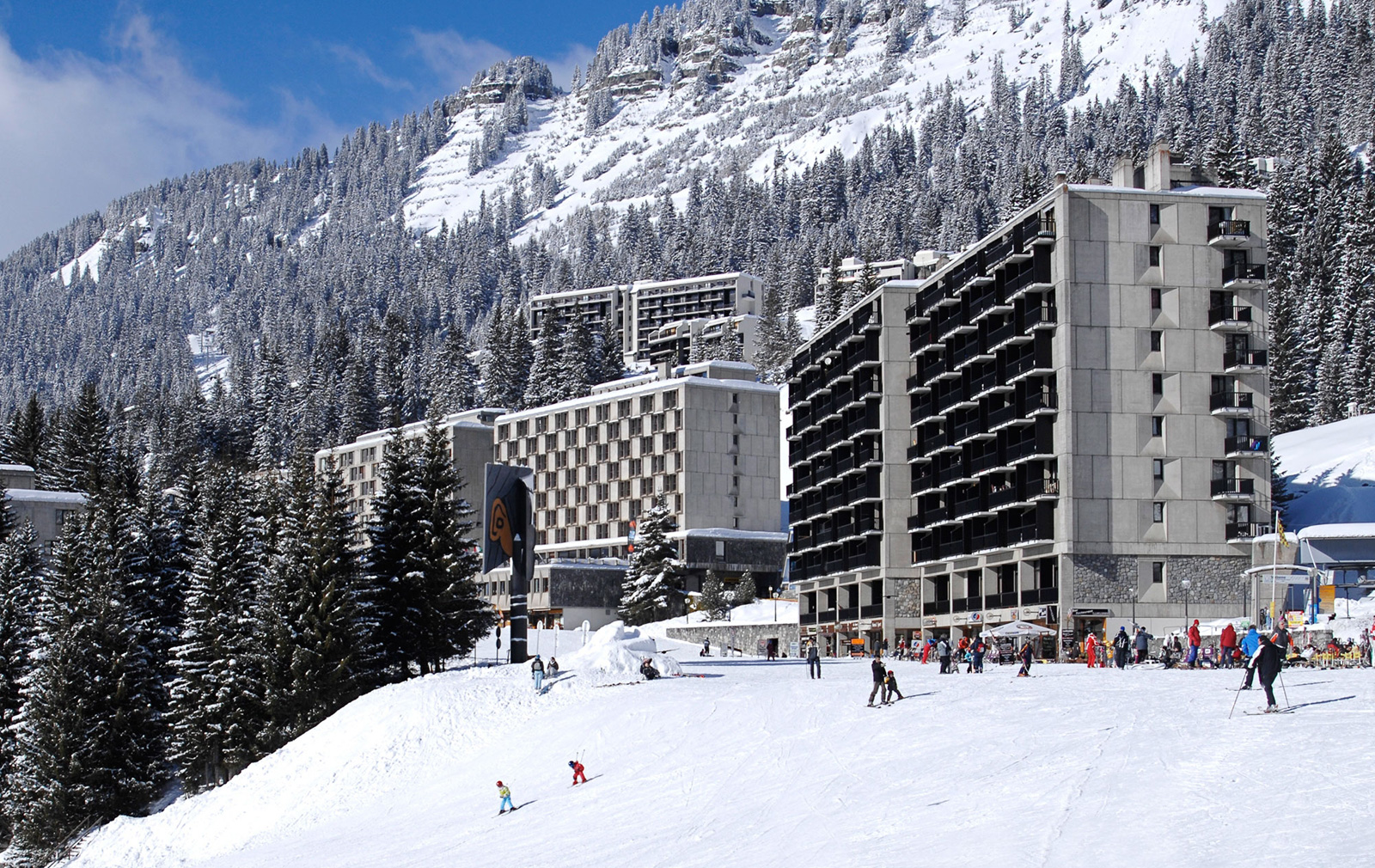
Brutalism is back in vogue – and where reuse makes logistical sense, the cream of the crop is being rescued and reprogrammed for the 21st century.
Nowhere is this truer than with Brutalist holiday architecture. While some structures never fell out of use, many concrete complexes – hotels, sanatoriums, and cultural resorts – have flirted with obsolescence, like Marcel Breuer’s Flaine arts village in the French Alps, and a serpentine convalescent home on the Israeli coast.
Head to the former USSR, and the narrative is more complicated. A vast number of Brutalist housing blocks, office buildings and hotels – wrapped in a utopian Futurism and often overbuilt – have been pinched by years of war and upheaval, and sit abandoned (some after barely 20 years of use).
In Soviet satellite states by the Black and Baltic seas, Brutalism was the blueprint of holiday architecture. Bold concrete designs became the physical embodiment of the State’s commitment to leisure – enshrined in a law that gave everybody a two-week holiday. And these workers’ resorts, concentrated in Crimea, were official policy.
Here, we go inside the Brutalist holiday getaways that have beaten the odds.

Elma Arts Complex
Zichron Ya’akov, Israel
The Elma is a hotel and arts centre in a former convalescent home 40 miles from Tel Aviv. It has taken eight years to revise the interior of Israeli architect Yaakov Rechters’s dramatic 1972 concrete ribbon on a coastal hilltop, and turn it into a 95-key ‘design hotel’. Philanthropist Lily Elstein has spearheaded efforts to revive the former sanitorium, drafting in designer Lea Mahler and architects Baranowitz & Kronenberg to oversee its transformation.
The team formally wed the interior to the exterior through use of cement, terrazzo, oak and walnut minimalist furnishings. Gallery space showcases Elstein’s collection and the work of Israeli and international artists, and two state-of-the-art performance halls beckon to top musicians and playwrights.

Elma Arts Complex
Zichron Ya’akov, Israel
The Elma is a hotel and arts centre in a former convalescent home 40 miles from Tel Aviv. It has taken eight years to revise the interior of Israeli architect Yaakov Rechters’s dramatic 1972 concrete ribbon on a coastal hilltop, and turn it into a 95-key ‘design hotel’. Philanthropist Lily Elstein has spearheaded efforts to revive the former sanitorium, drafting in designer Lea Mahler and architects Baranowitz & Kronenberg to oversee its transformation.
The team formally wed the interior to the exterior through use of cement, terrazzo, oak and walnut minimalist furnishings. Gallery space showcases Elstein’s collection and the work of Israeli and international artists, and two state-of-the-art performance halls beckon to top musicians and playwrights.
Photographs courtesy of Elma Hotel

Elma Arts Complex
Zichron Ya’akov, Israel
The Elma is a hotel and arts centre in a former convalescent home 40 miles from Tel Aviv. It has taken eight years to revise the interior of Israeli architect Yaakov Rechters’s dramatic 1972 concrete ribbon on a coastal hilltop, and turn it into a 95-key ‘design hotel’. Philanthropist Lily Elstein has spearheaded efforts to revive the former sanitorium, drafting in designer Lea Mahler and architects Baranowitz & Kronenberg to oversee its transformation.
The team formally wed the interior to the exterior through use of cement, terrazzo, oak and walnut minimalist furnishings. Gallery space showcases Elstein’s collection and the work of Israeli and international artists, and two state-of-the-art performance halls beckon to top musicians and playwrights.
Photographs courtesy of Elma Hotel

Elma Arts Complex
Zichron Ya’akov, Israel
The Elma is a hotel and arts centre in a former convalescent home 40 miles from Tel Aviv. It has taken eight years to revise the interior of Israeli architect Yaakov Rechters’s dramatic 1972 concrete ribbon on a coastal hilltop, and turn it into a 95-key ‘design hotel’. Philanthropist Lily Elstein has spearheaded efforts to revive the former sanitorium, drafting in designer Lea Mahler and architects Baranowitz & Kronenberg to oversee its transformation.
The team formally wed the interior to the exterior through use of cement, terrazzo, oak and walnut minimalist furnishings. Gallery space showcases Elstein’s collection and the work of Israeli and international artists, and two state-of-the-art performance halls beckon to top musicians and playwrights.
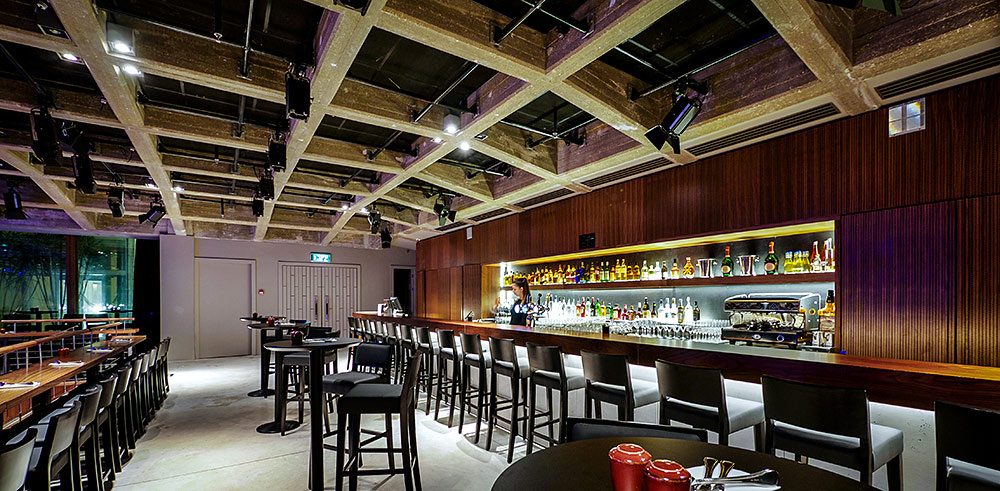
Elma Arts Complex
Zichron Ya’akov, Israel
The Elma is a hotel and arts centre in a former convalescent home 40 miles from Tel Aviv. It has taken eight years to revise the interior of Israeli architect Yaakov Rechters’s dramatic 1972 concrete ribbon on a coastal hilltop, and turn it into a 95-key ‘design hotel’. Philanthropist Lily Elstein has spearheaded efforts to revive the former sanitorium, drafting in designer Lea Mahler and architects Baranowitz & Kronenberg to oversee its transformation.
The team formally wed the interior to the exterior through use of cement, terrazzo, oak and walnut minimalist furnishings. Gallery space showcases Elstein’s collection and the work of Israeli and international artists, and two state-of-the-art performance halls beckon to top musicians and playwrights.
Photographs courtesy of Elma Hotel
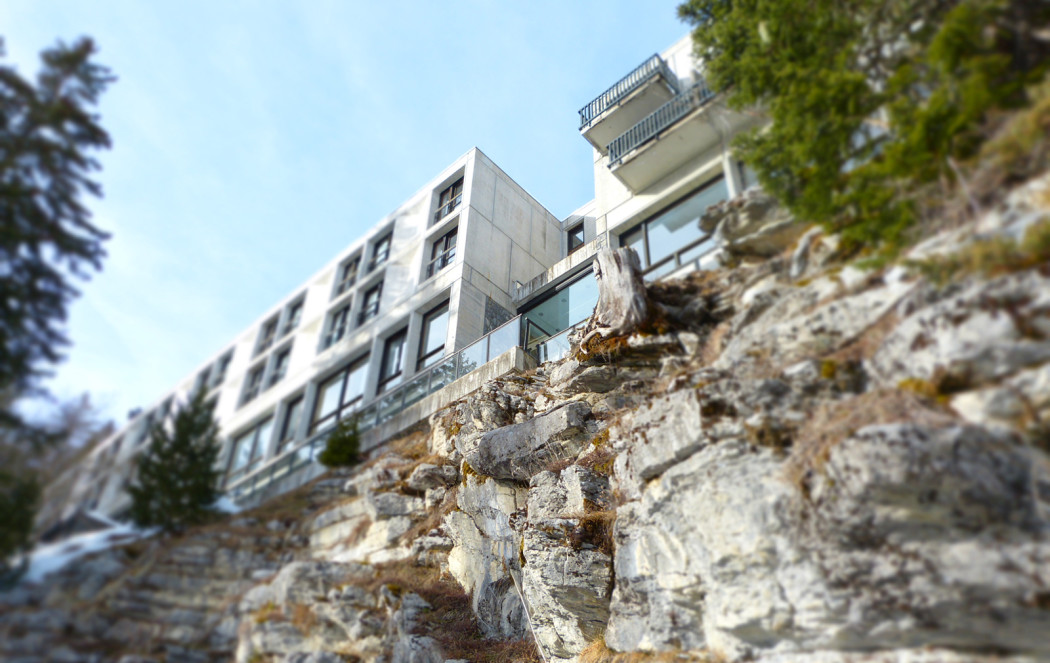
At 2,000 metres elevation, Marcel Breuer’s Modernist village in the Alps is being reshaped bit by bit. A new 96-room hotel – named for the Picasso sculpture out front – has walls borrowing the palette of Victor Vasarely’s ‘Les Trois Hexagons’ and local art and furniture feasting on the neutrality of Breuer’s endless concrete surfaces (much like his Whitney Museum). Views and a vast network of ski slopes guarantee the site’s magnetism, but one prospect looms large – that the new hotel might spark broader interest in Flaine itself, once a hub for the art set.
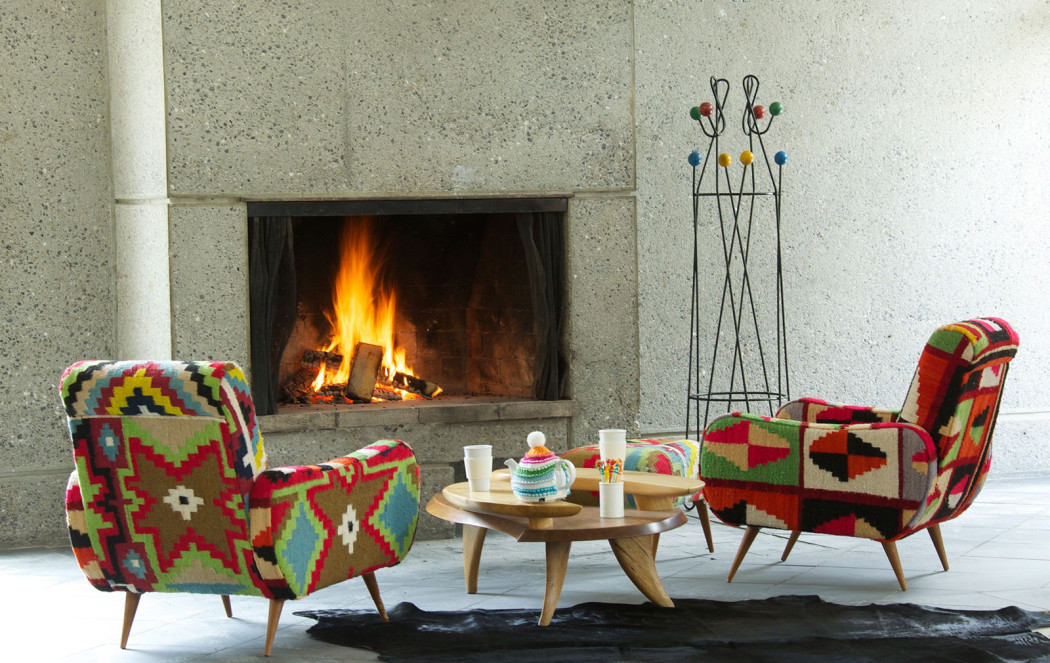
At 2,000 metres elevation, Marcel Breuer’s Modernist village in the Alps is being reshaped bit by bit. A new 96-room hotel – named for the Picasso sculpture out front – has walls borrowing the palette of Victor Vasarely’s ‘Les Trois Hexagons’ and local art and furniture feasting on the neutrality of Breuer’s endless concrete surfaces (much like his Whitney Museum). Views and a vast network of ski slopes guarantee the site’s magnetism, but one prospect looms large – that the new hotel might spark broader interest in Flaine itself, once a hub for the art set.
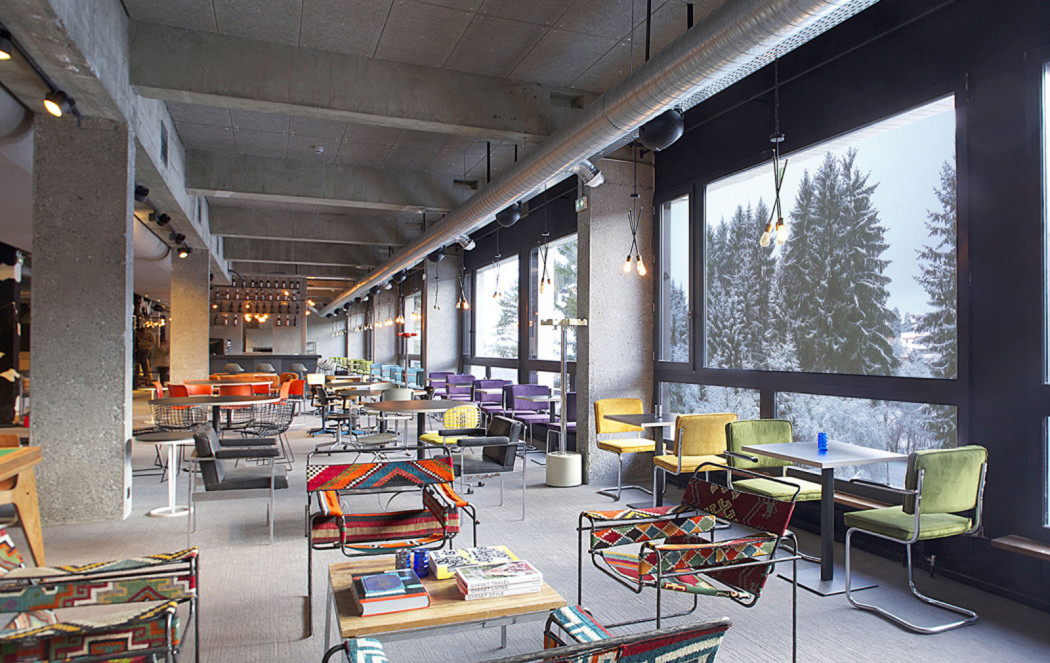
At 2,000 metres elevation, Marcel Breuer’s Modernist village in the Alps is being reshaped bit by bit. A new 96-room hotel – named for the Picasso sculpture out front – has walls borrowing the palette of Victor Vasarely’s ‘Les Trois Hexagons’ and local art and furniture feasting on the neutrality of Breuer’s endless concrete surfaces (much like his Whitney Museum). Views and a vast network of ski slopes guarantee the site’s magnetism, but one prospect looms large – that the new hotel might spark broader interest in Flaine itself, once a hub for the art set.
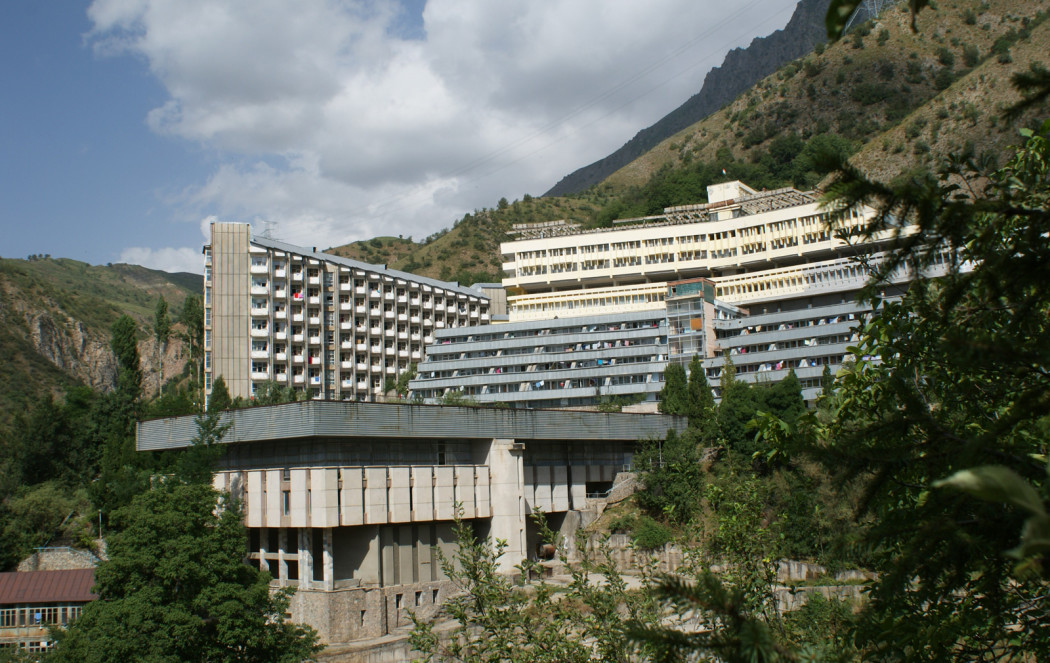
Khoja Obi Garm
The Gissar Range, Tajikistani
In air thinner still is this old Tajikistani sanatorium. Architect and construction date are unknown, but the complex has grown over the decades. The retreat fits neatly into the Soviet script of resort spas competing for attention with their natural surroundings. This is a particularly large installation, deftly likened by writer Maryam Omidi to a London council estate plopped incongruously atop a mountain. Guests come for the area’s healing (and radioactive) radon waters and a range of peculiar electro-therapies.
Photography: Esther

Khoja Obi Garm
The Gissar Range, Tajikistani
In air thinner still is this old Tajikistani sanatorium. Architect and construction date are unknown, but the complex has grown over the decades. The retreat fits neatly into the Soviet script of resort spas competing for attention with their natural surroundings. This is a particularly large installation, deftly likened by writer Maryam Omidi to a London council estate plopped incongruously atop a mountain. Guests come for the area’s healing (and radioactive) radon waters and a range of peculiar electro-therapies.
Photography: Rustam Khalikov (Creative Commons License)
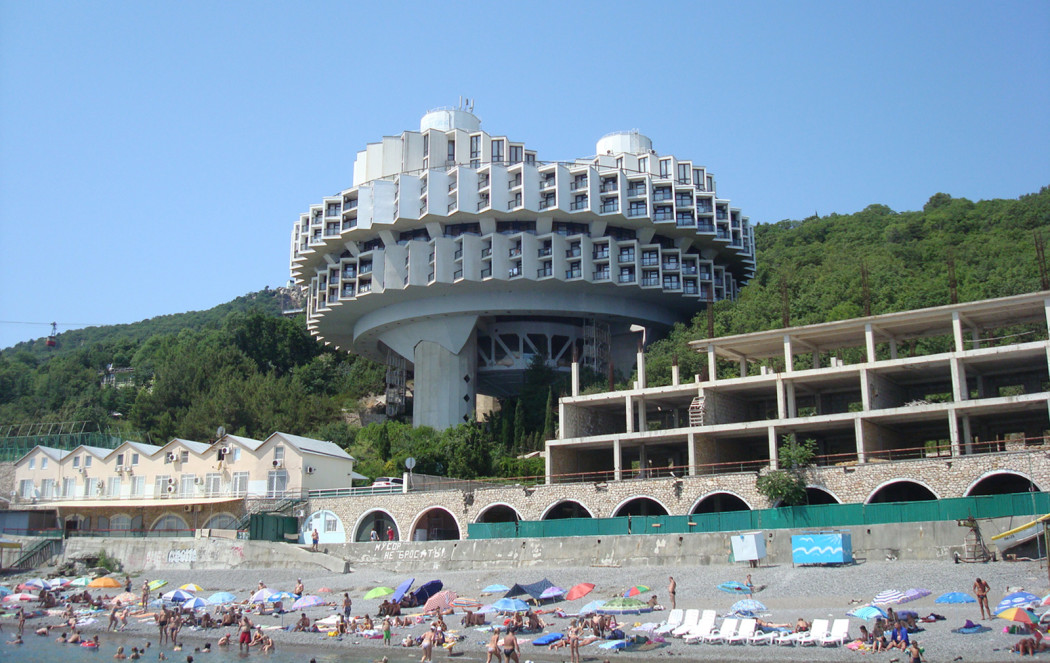
Kurpaty Sanatorium
Yalta, Crimea
An apogee of Soviet Futurist architecture in the age of Stalin, the Kurpaty sanatorium remains open for business on Ukraine’s Black Sea shores. The flying saucer on a pedestal has two main decks of hotel rooms with windows angled for views and privacy. Lifts carry guests up sturdy tripod legs to their rooms and a walkway makes the link from road to terrace at the top of the building.
Photography: Dimante
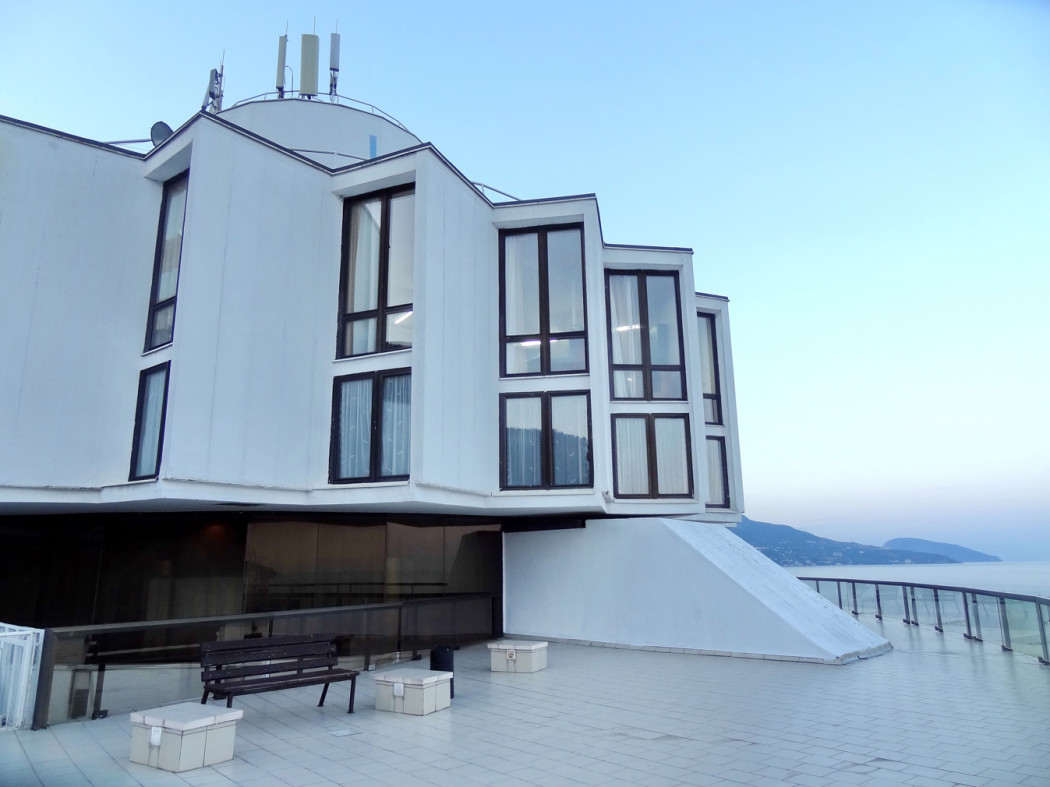
Kurpaty Sanatorium
Yalta, Crimea
An apogee of Soviet Futurist architecture in the age of Stalin, the Kurpaty sanatorium remains open for business on Ukraine’s Black Sea shores. The flying saucer on a pedestal has two main decks of hotel rooms with windows angled for views and privacy. Lifts carry guests up sturdy tripod legs to their rooms and a walkway makes the link from road to terrace at the top of the building.
Photography: William Verbeek
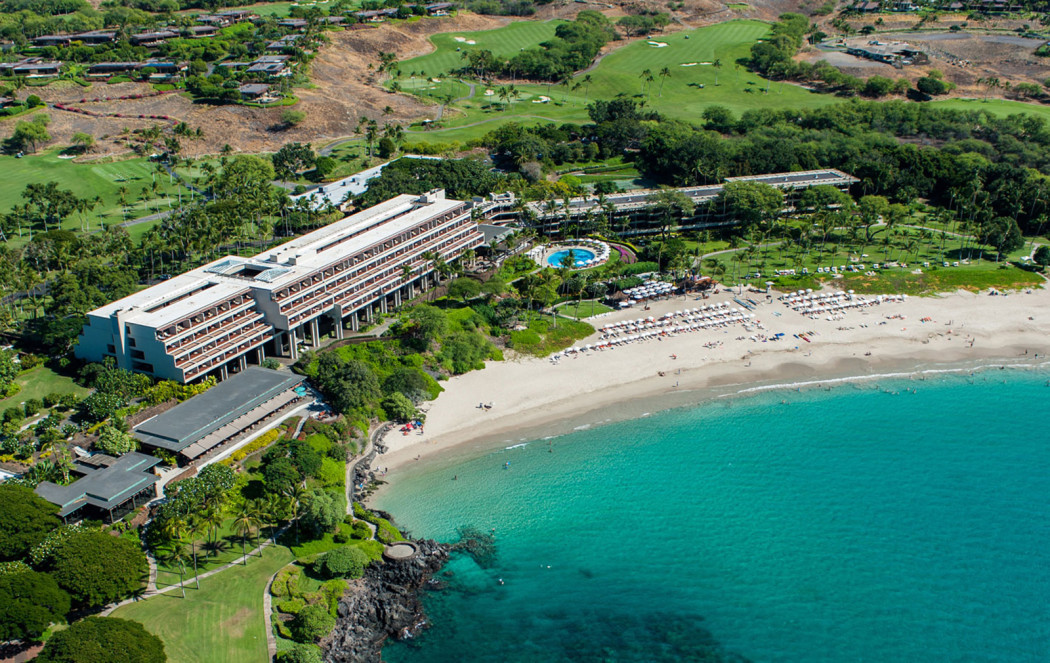
Mauna Kea Beach Hotel,
Hawaii, USA
This legendary Hawaiian hotel by Laurance S Rockefeller and architect Skidmore Owings & Merrill dates to 1965. A 2013 refresh ramped up the naturalistic vibe and nearly doubled the room count.
The hotel’s Brutalist credential is debatable: its dominating cantilevered presence is softened by streamlined massing, cascading open galleries, and floating staircases. Aqua blue floors have been sensitively applied and concrete hues chosen to match the sand. But from the promenade level this is one exceptionally imposing structure.
Photography: Big Island Luxury
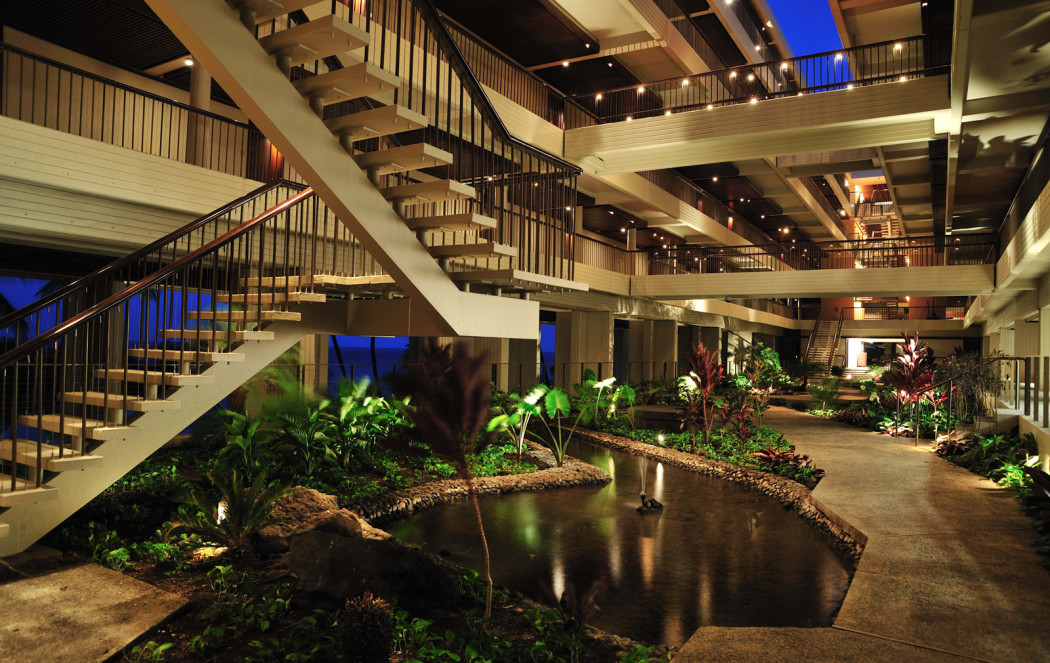
Mauna Kea Beach Hotel,
Hawaii, USA
This legendary Hawaiian hotel by Laurance S Rockefeller and architect Skidmore Owings & Merrill dates to 1965. A 2013 refresh ramped up the naturalistic vibe and nearly doubled the room count.
The hotel’s Brutalist credential is debatable: its dominating cantilevered presence is softened by streamlined massing, cascading open galleries, and floating staircases. Aqua blue floors have been sensitively applied and concrete hues chosen to match the sand. But from the promenade level this is one exceptionally imposing structure.
Photography: Marriot / Autograph Cllection
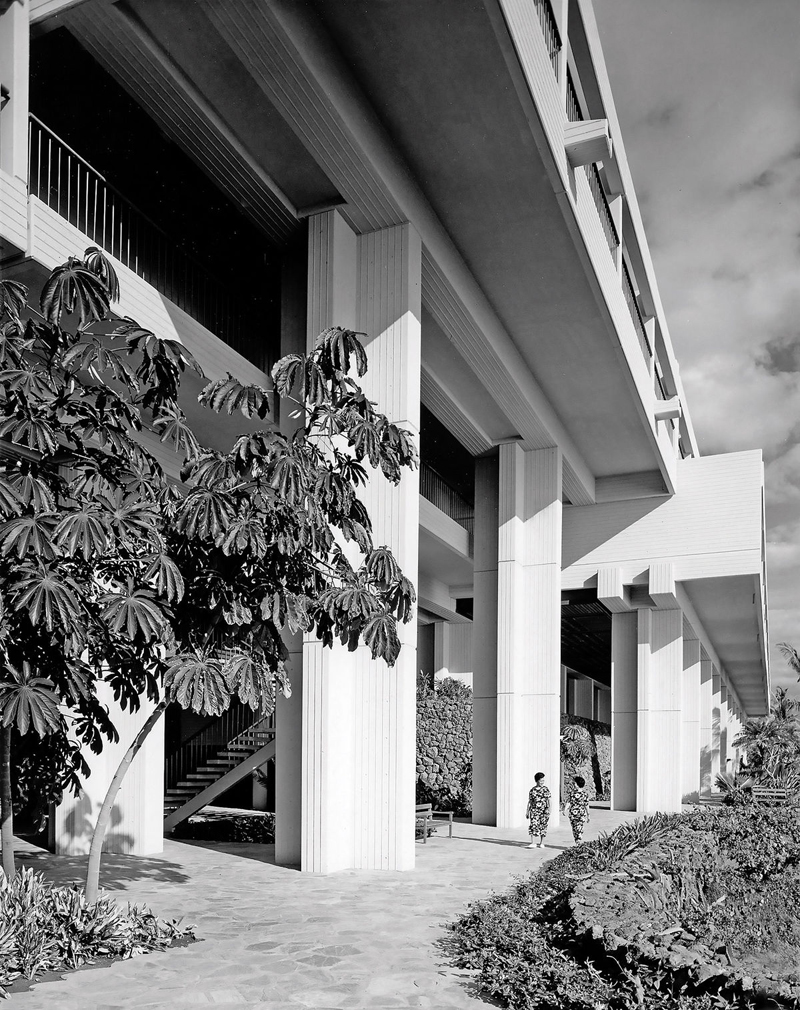
Mauna Kea Beach Hotel,
Hawaii, USA
This legendary Hawaiian hotel by Laurance S Rockefeller and architect Skidmore Owings & Merrill dates to 1965. A 2013 refresh ramped up the naturalistic vibe and nearly doubled the room count.
The hotel’s Brutalist credential is debatable: its dominating cantilevered presence is softened by streamlined massing, cascading open galleries, and floating staircases. Aqua blue floors have been sensitively applied and concrete hues chosen to match the sand. But from the promenade level this is one exceptionally imposing structure.
Photography: Mauna Kea Resort Archive Collections
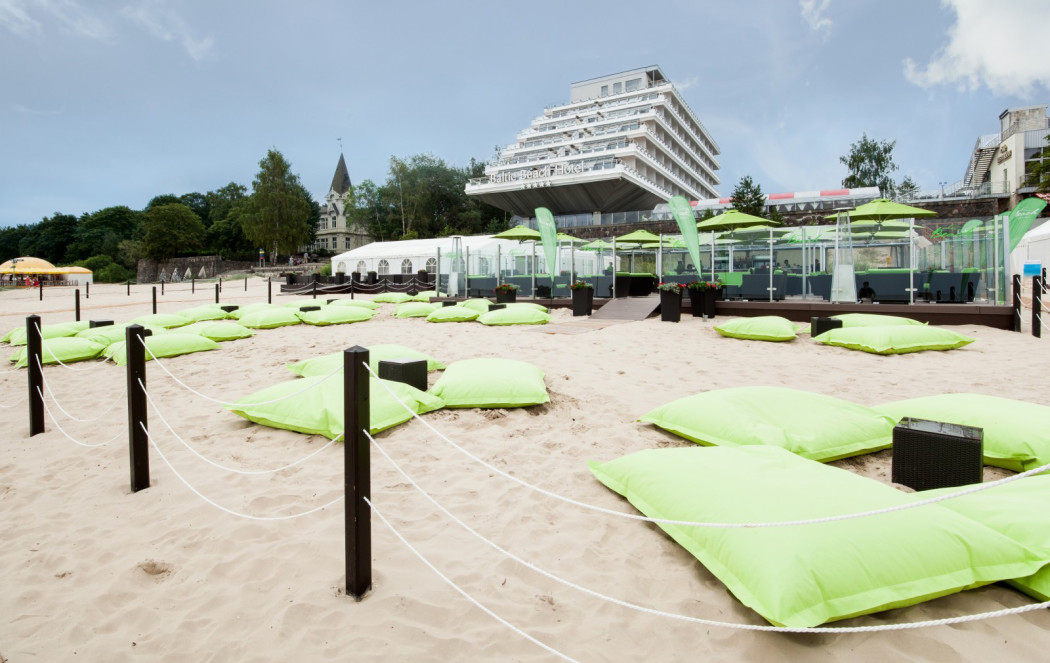
Baltic Beach Hotel
Jurmala, Latvia
A Soviet discard in Jurmala, Latvia, this scar on the Baltic dunescape was revived as a five-star hotel resort in 2004. It now has one of Europe’s largest spas, a conference centre, bars, and a ‘caviar club’. Interiors are high-gloss and glittery, but the private rooms still come across as stale. The reclaimed building takes the form of a terraced cruise ship cast in concrete; it even fakes a hull with conviction. And the Stalinist tag applies to this spruced up Brutalism – a sort of postmodern populism.
Courtesy of Baltic Beach Hotel
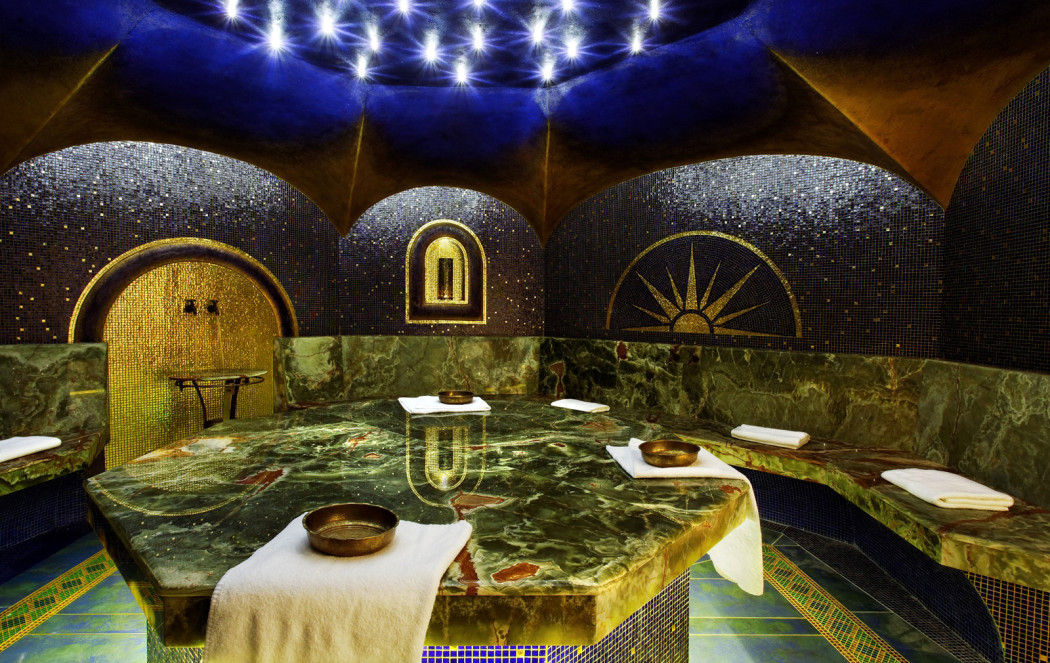
Baltic Beach Hotel
Jurmala, Latvia
A Soviet discard in Jurmala, Latvia, this scar on the Baltic dunescape was revived as a five-star hotel resort in 2004. It now has one of Europe’s largest spas, a conference centre, bars, and a ‘caviar club’. Interiors are high-gloss and glittery, but the private rooms still come across as stale. The reclaimed building takes the form of a terraced cruise ship cast in concrete; it even fakes a hull with conviction. And the Stalinist tag applies to this spruced up Brutalism – a sort of postmodern populism.
Courtesy of Baltic Beach Hotel

Baltic Beach Hotel
Jurmala, Latvia
A Soviet discard in Jurmala, Latvia, this scar on the Baltic dunescape was revived as a five-star hotel resort in 2004. It now has one of Europe’s largest spas, a conference centre, bars, and a ‘caviar club’. Interiors are high-gloss and glittery, but the private rooms still come across as stale. The reclaimed building takes the form of a terraced cruise ship cast in concrete; it even fakes a hull with conviction. And the Stalinist tag applies to this spruced up Brutalism – a sort of postmodern populism.
Pictured: The hotel in 2003, before its restoration. Photography: Riclib
